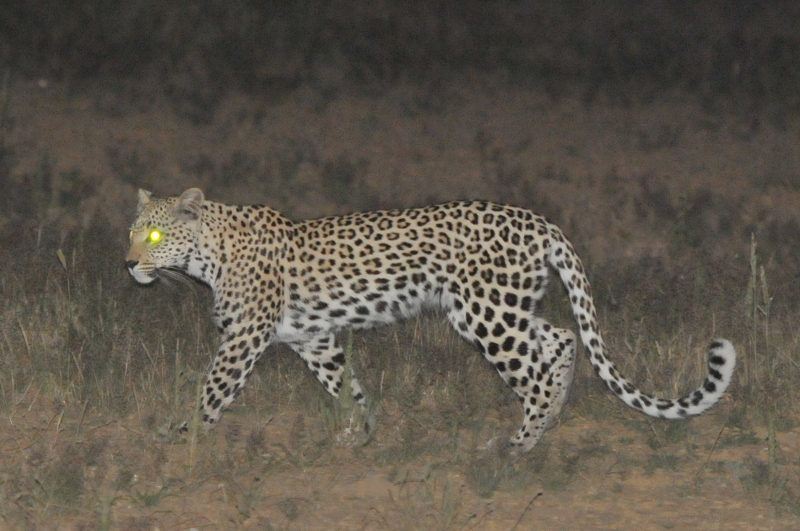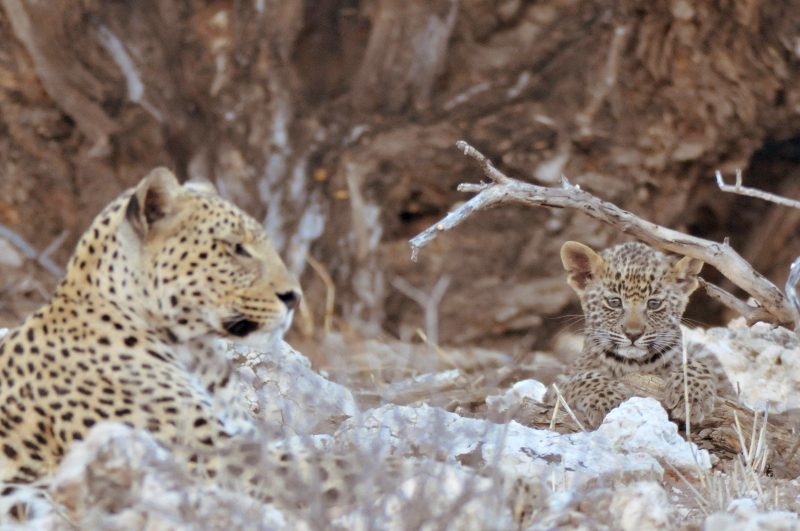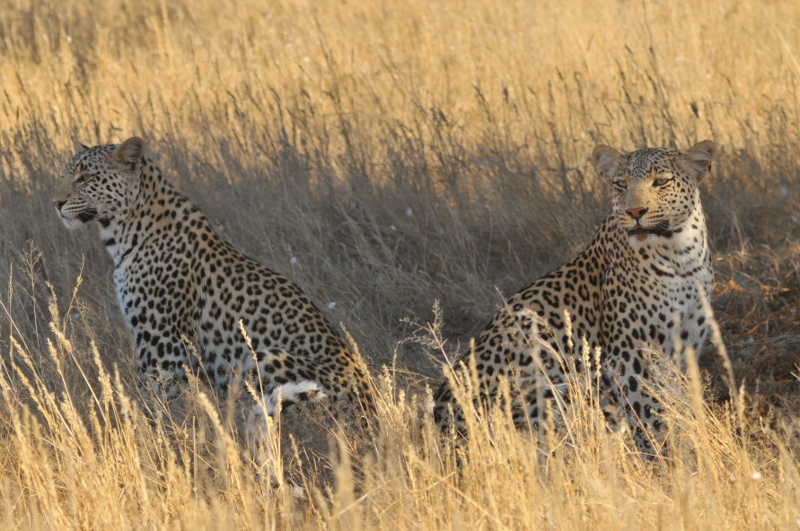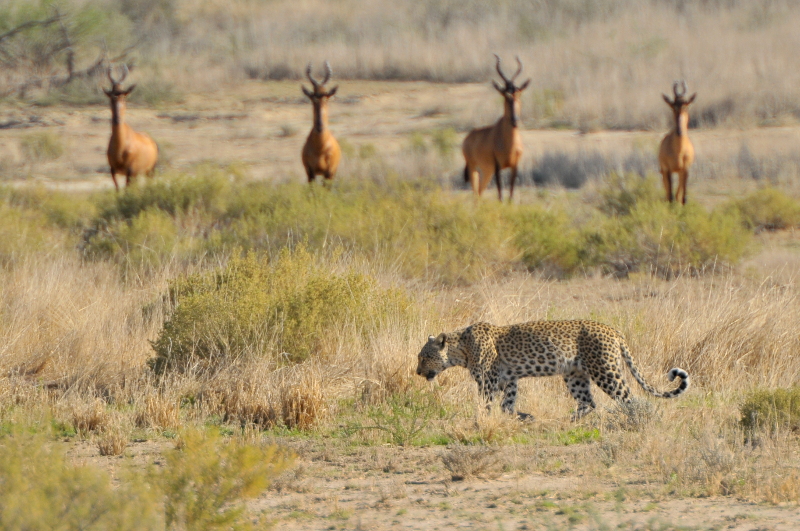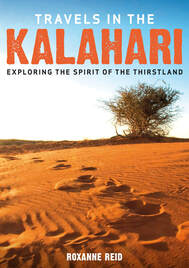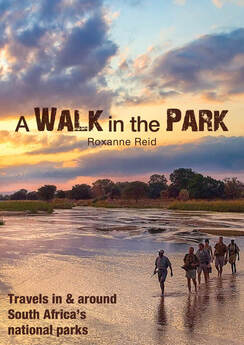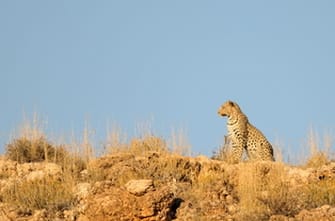
Leopards may not need ID photos for a passport, but a project initiated by Dr Matthew Schurch is determined to identify leopards through photos anyway. At first the focus is on the Kgalagadi Transfrontier Park and Augrabies Falls National Park. I asked him the how, what and why, and to share some of his ID photos.
After my first trip to the Kgalagadi Transfrontier Park I tried to identify my only leopard sighting against some known leopards posted on the SANParks forum leopard identification thread. This proved tricky as the leopard was a new individual, now known as Jaffles. After that I was hooked.
At the present count I know of 60 individuals that can be uniquely identified through their spot patterns. These leopards go as far back as 2002. Of course, a number of these are probably not with us anymore. I classify a current leopard as one that has been seen in the park within the past two years. We have 39 current leopards.
The leopard ID guide has two sides. The main aim is to facilitate science. By using the guide we can easily identify the leopards in the park from public sightings. This will provide valuable data on range size and movement patterns as well as breeding rate and success. In the long term we hope it will help us to get an idea on the typical age that a Kalahari leopard lives to; this might be quite different to its Lowveld cousins due to the different (harsher) environment they live in.
The second aim is to improve the visitor’s experience in the park. Being able to identify a leopard that you have seen before or just learning about the leopard you are watching can bring a whole new level of excitement to a sighting. You may read in the guide that the particular leopard you’re watching has been seen recently with cubs; this sort of information could turn a great sighting into a true once-in-a-lifetime sighting!
Anyone who has visited the park and seen a leopard – and who can still find the photo – can greatly help my project by submitting these sightings to me. Historical sightings are just as important if not more so than current ones. A single historical sighting can tell us that a leopard is much older than we thought or could even provide a link between a mother and its cub, as was the case with Kanna and Langklaas when I was sent a sighting from 2006.
Do the photos need to be pin-sharp, prize-winning portraits or can you work with poor photos?
Obviously the better the picture, the easier it is to make an identification from. However, I've become pretty good at making identifications from night shots, motion-blurred photos, partial leg shots, even pictures where just the tail is visible. One or two clear shots showing the head or flanks would be ideal, but people can send anything and I'll give it a go!
I have a website with a lot of information about the project. You can download the identification guide for both the Kgalagadi and Augrabies parks for free as a pdf. (I suggest putting it on an iPad or similar device rather than printing it out since it will change every six months as information is updated, and this is much greener than printing anyway).
To report a sighting, contact me on the Kgalagadi Leopard ID Facebook page or drop me an email with a couple of pictures and I'll confirm or identify the leopard for you. The project email is [email protected].
More about the Kgalagadi
Copyright © Roxanne Reid - No words or photographs on this site may be used without permission from roxannereid.co.za
